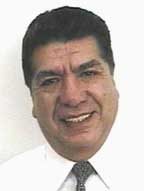Selected Works of Sergio Jiménez, MD, MACR
CCAAT binding transcription factor binds and regulates human COL1A1 promoter activity in human dermal fibroblasts: demonstration of increased binding in systemic sclerosis fibroblasts
Biagio Saitta, Istituto di Biologia dello Sviluppo, Palermo, Italy and Thomas Jefferson University; Svetlana Gaidarova, Thomas Jefferson University; Lucia Cicchillitti, Thomas Jefferson University; and Sergio A. Jimenez, Thomas Jefferson University
DATE: October 2000
SOURCE: Arthritis & Rheumatism, 43(10):2219-2229
RELATED URL: http://www3.interscience.wiley.com/journal/78502028/abstract
ABOUT THIS DOCUMENT:
This article is available only from the publisher's website.
ABSTRACT:
OBJECTIVE: To determine the binding factors that interact with the proximal promoter region of the human type I collagen gene, COL1A1, and to examine their involvement in its transcriptional regulation in normal and systemic sclerosis (SSc) dermal fibroblasts.
METHODS: Nuclear extracts from dermal fibroblasts from 4 patients with SSc and 4 age- and sex-matched control individuals were examined by electrophoresis mobility shift assays with a COL1A1 promoter fragment encompassing nucleotides -174 to -50 bp. Supershift assays with antibodies specific to various transcription factors, and competition experiments using consensus, wild-type, or mutated oligonucleotides corresponding to their specific binding sites, were performed. The effects of specific oligonucleotides as "intracellular competitors" were examined by transient transfection experiments in SSc fibroblasts using a COL1A1 construct containing -174 bp of the promoter.
RESULTS: The findings demonstrate that the CCAAT binding transcription factor (CBF) binds the proximal CCAAT box located at -100 to -96 bp, but not the distal CCAAT box at -125 to -121 bp, of the human COL1A1 promoter in both SSc and normal fibroblasts. CBF binding activity was 3-5-fold higher in the SSc fibroblasts. Moreover, the promoter activity of the -174-bp COL1A1 construct was decreased by up to 50% when specific oligonucleotides were used as "intracellular competitors." In addition, Sp1 and Sp3 were other transcription factors found to be involved in the formation of the DNA-protein complexes within this region of the COL1A1 promoter.
CONCLUSION: These results indicate that the transcription factor CBF binds the human COL1A1 proximal promoter region in human dermal fibroblasts, and its binding activity is higher in SSc fibroblasts.

